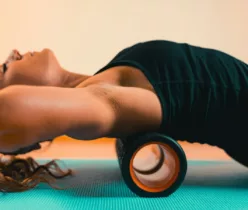Unveiling the Power of Crunches: Sculpting Your Core with Precision!
When we envision a fit physique, the image of well-defined abs often takes center stage. For many, the go-to exercise for achieving this coveted core is none other than crunches.
But do these exercises offer more than just a toned midsection? We reached out to fitness expert and author Bhavna Harchandrai to delve into the world of crunches, uncovering their benefits and the art of performing them correctly.
The Bounty of Crunches: Why Are They Worth It?
Your core muscles serve as the vital bridge between your upper and lower body. Whether you’re engaged in a workout session or tackling household chores, a robust core is your ally for seamless daily activities. Neglecting core strength leaves you vulnerable to lower back pain, poor posture, and the unsightly appearance of abdominal bulges peeking over your jeans, warns the fitness expert.
The Multifaceted Advantages of Crunches:
- Flatten that Belly: Ab crunches excel in toning and strengthening the rectus abdominis, the coveted six-pack muscle. However, remember that a comprehensive core workout should encompass not only crunches but also exercises targeting the internal and external obliques, transverse abdominis, and lower back muscles.
- Crunches are safer and more effective than sit-ups, which can strain the lower back and overly engage the hip flexors.

The Art of Crunching: How to Do it Right
To maximize the benefits of crunches and minimize the risk of injury, follow these steps meticulously:
- Positioning: Begin by lying flat on your back (supine position) with your feet flat and knees pointing upward. Imagine you’re lifting your head, neck, and shoulders off the floor while looking at a 45-degree angle. Ensure your chin stays clear of your chest.
- Progressive Crunches: Bhavna Harchandrai explains that Ab work can be approached in four stages:
- Stage 1: Arms straight ahead. This places the most strain on the neck.
- Stage 2: Cross your arms over your shoulders for a more intermediate level.
- Stage 3: Position your hands behind your head in a shooting stance, with elbows at the back and fingers supporting the neck.
- Stage 4: Keep your arms straight and positioned behind your head by your ears. This represents a more advanced form of Abdominal exercises.
When performing a crunch, focus on lifting your head, neck, shoulders, and upper back off the ground. Inhale as you return to the floor. The key, as emphasized by the fitness expert, is drawing your navel toward your spine and pulling your abs toward the ground.
Who Should Steer Clear of Crunches?
While crunches offer fantastic benefits for those seeking well-defined abs, they may not be suitable for everyone. Pregnant women, individuals prone to neck pain, and those with osteoporosis are advised to avoid ab work.

Tailoring Crunches for Your Needs:
- Leg Lifts: For individuals with lower back issues, lifting the legs to a 90-degree angle can provide a safer alternative.
- Piano Pose: Lying on your back with your legs elevated at a 90-degree angle can support the back and is suitable for those with lower back pain.
For pregnant women, the suitability of crunches depends on the stage of pregnancy and various factors. To prevent diastasis recti, pregnant people should avoid abdominal exercises during the first trimester. Instead, they should do pelvic tilts, Kegel exercises, cat-cow poses, and bird-dog exercises to maintain abdominal and pelvic floor muscle strength.
Crunches: A Piece of the Puzzle
While ab crunches are a potent tool for sculpting your abdominal muscles, they are not a miraculous solution. A holistic approach is essential, including a balanced diet and regular physical activity. Achieving a defined core requires both dietary mindfulness and aerobic workouts, as abdominal muscles are often concealed by a layer of fat. Additionally, remember that ab crunches alone won’t suffice; integrating full-body exercises into your routine is key to witnessing a transformative difference.
So, embark on your journey to a sculpted core, but always remember that the path to fitness is multifaceted, requiring commitment and a well-rounded approach.




